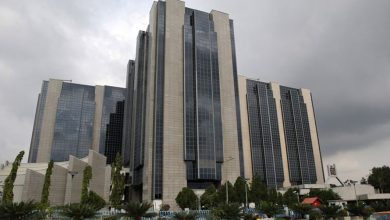CBN Retains Lending Rate at 11.5% as Emefiele Flays Currency Speculators

The Central Bank of Nigeria (CBN) on Tuesday asserted that persons using parallel market rates to pile pressure on it to devalue the Naira won’t have their way, stressing that “it is unfair that even analysts who should know are using parallel market rate to say that our currency is overvalued and therefore calling for devaluation.”
The CBN Governor, Godwin Emefiele, disclosed this after the Monetary Policy Committee’s two-day meeting in Abuja. The committee retained the Monetary Policy Rate (MPR), which determines the interest rate, at 11.5 percent. The Cash Reserve Ratio and Liquidity Ratio were also left at 27.5 percent and 30 percent respectively.
At the last MPC meeting in September, the committee reduced the MPR from 12.5 percent to 11.5 percent.
Emefiele, while flaying those using the Parallel market to push for Naira devaluation, stated that the Naira had already been devalued by about 28 percent this year, just like many other currencies of the world.
Also Read: BOFIA Act 2020: CBN Gets Enhanced Power to Sell Failing Banks
According to him, “It is unfair that even analysts who should know are using parallel market rate to say that our currency is overvalued and therefore calling for devaluation. This is very unfortunate.
“The parallel market is a shallow market of only about 5 percent of the foreign exchange market which is patronized by people who go there for cash to offer bribes and corruption. The parallel market is the place where people who don’t want to provide documents go.
“At the I&E (Import& Export) Window, the rate is about N386 or N387 / $1. We don’t control the I&E window. Why will anyone use the parallel market to say that the exchange rate is over N480/$1?”
Also Read: Nigeria’s Inflation Rate Reaches 14.23 Percent in October, Above CBN Forecast
Nigeria is currently experiencing its second recession in five years as confirmed by the national statistics agency on Saturday, with the Gross Domestic Product shrinking for the second consecutive quarter this year.
The National Bureau of Statistics announced that the nation’s GDP recorded negative growth of 3.62 percent in the third quarter of 2020 after it had earlier recorded a 6.10 percent contraction in the second quarter.
The slump in GDP is coupled with rising inflation – the rate rose by 14.23% (year-on-year) in October – and high unemployment, all of which make up an economic situation known as “stagflation” in the wake of the crippling coronavirus pandemic.








3 Comments